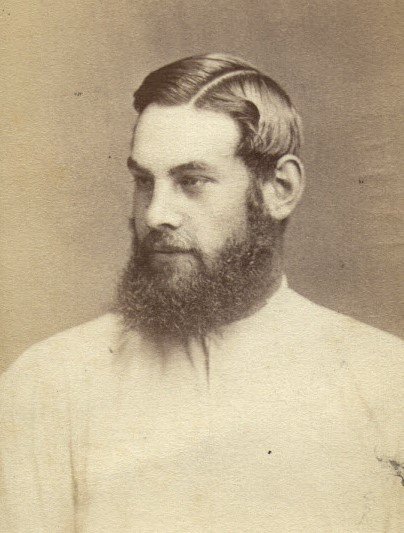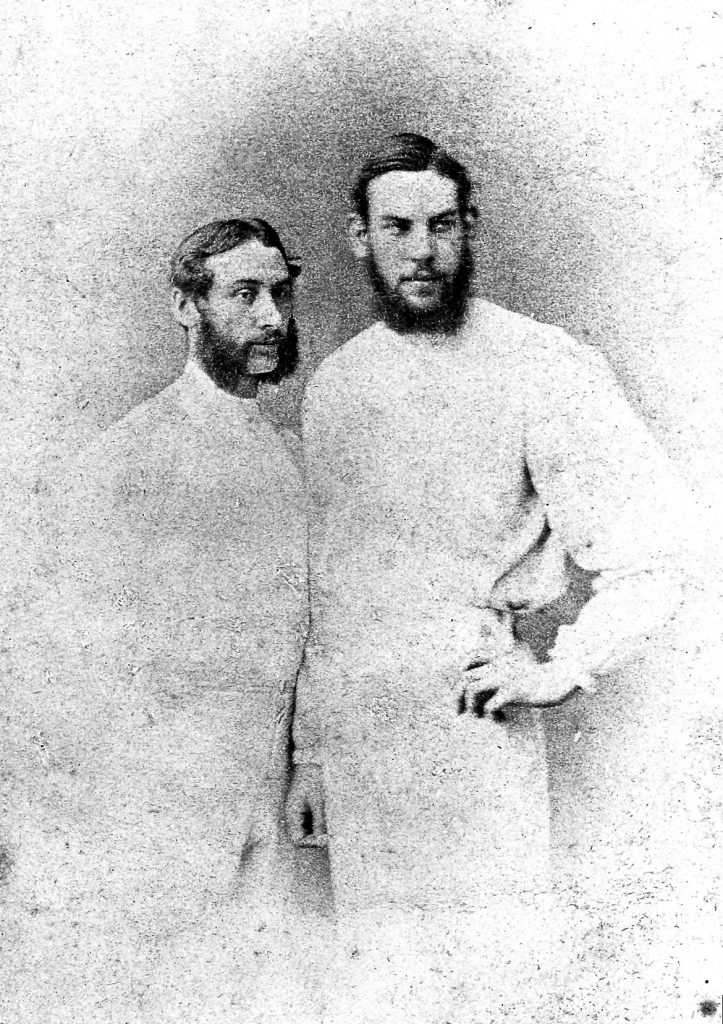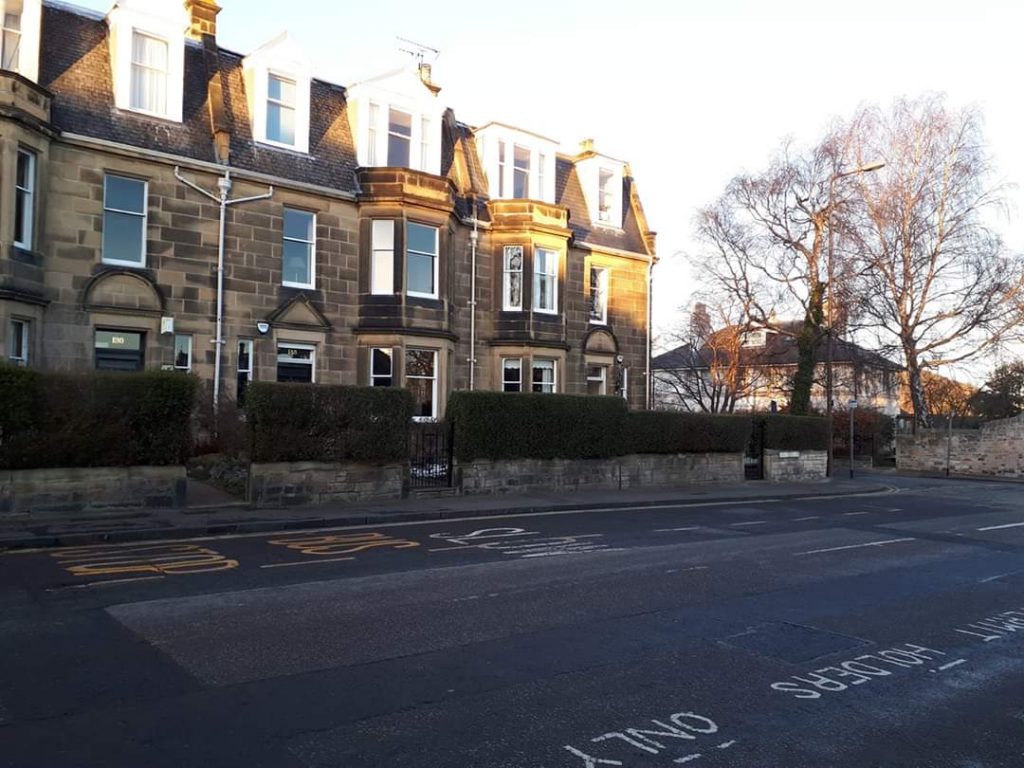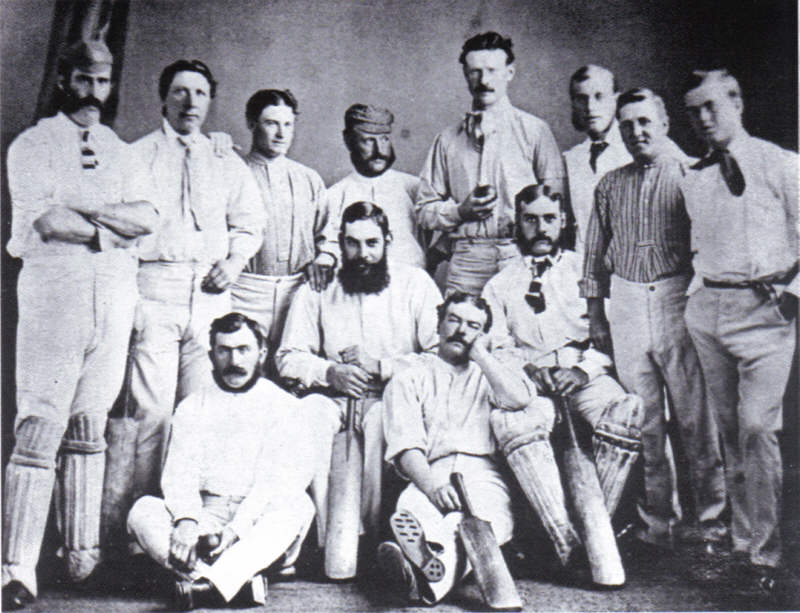Back in 1863, the gentlemen of Edinburgh’s St Bernard’s Literary and Debating Society had agreed to form a cricket club to provide a suitably wholesome activity to occupy their summer months. Taking its name from London’s Conservative-dominated Carlton Club – ‘the promotors being very Tory’ – and colours from the twin blues of Oxford and Cambridge, the new team joined the host of others already playing at Stockbridge Park and on the Meadows, the large public park in the centre of the city still well used by club cricketers today.
Success came quickly, and by 1866 Carlton’s financial position had improved to the point where a piece of private land could be rented on the city’s Grange Loan. Its wickets were little better than the public ones that had been left behind, however, and so in 1869 the club moved again, to a plot known as Little Transylvania – ‘a reference to trees and silviculture, rather than vampires’ – on nearby St. Thomas Road.

Still, though, the facilities left much to be desired. ‘Doubtless the Carlton made the pitch as good as it was possible to make it,’ reported the Evening Courant in its write up of a match between Carlton and Kelso that same year, ‘but with all their labours it was very bad and the ball bumped frequently as high as the batsman’s shoulders.’
It would have been interesting to see what WG could have made of such a challenge, but Little Transylvania was not the venue Carlton had in mind for the visit of his team. Instead it was Craigmount Park, an ‘excellent field’ situated next to Carlton’s present-day home on Grange Loan, which provided the setting for the Champion Cricketer’s first appearance in Scotland.
The decision to invite the United South had been taken at a meeting of the Carlton committee on 24 November 1871. ‘The Secretary mentioned that this meeting was called for the purposes of considering whether the United South of England Eleven should be brought down,’ the minutes record. ‘There being no counter-motion [the proposal] was unanimously agreed.
‘The Chairman then proposed that a Committee should be formed to make up [a] list of Twenty-Two Gentlemen to play against [the] Eleven and manage sundry things that might crop up connected.’
The committee’s final list naturally included a healthy number from Carlton. GF Rayner, JB Richardson – a one- and two-mile running champion known locally as ‘Carlton Dick’ – and CH Hayman were amongst those who joined their captain Dr Duncan McDonald, a lob-bowling all-rounder who ‘worked sixteen hours a day and could [still] find the time to play cricket’, at Craigmount Park for the start of the game. With the Scots keen to show the Edinburgh public exactly what they were made of, hopes were high as visiting bowler James Southerton got the match underway.
For the hosts, however, the clatter of wickets soon revealed the full extent of the task which lay ahead. Edinburgh lost its top seven for a combined total of only 10, and although Joseph Cotterill began his innings with two sixes off Southerton, his departure soon after, caught and bowled by the Sussex slow round-armer for 14, marked the beginning of another run of single-figure scores for the beleaguered home team.

Batting at fifteen, W. Cunningham’s 20 stands out on a card in which only he and Cotterill reached double figures, and in the end it was appropriate that it was Southerton, as catcher, and Lillywhite, as bowler, who combined to see him on his way. The two had bowled unchanged to dismiss the Gentlemen for 77, and as they left the field to the applause of the 3,000 spectators who had braved the ‘somewhat uninviting’ late spring weather, it was now up to the batsmen to build on their success.
Shortly after the lunch interval, openers WG Grace and Harry Jupp strode to the middle to begin the visitors’ reply. WG was quickly off the mark with a single, but having added only seven more he ‘played forward too soon and was cleverly caught by JB Richardson.’ The Gentlemen had the wicket they wanted, and Carlton Dick had a story to tell his grandchildren.
As, soon after, would William St Clair Grant. Richard Humphrey, a dangerous batsman who would tour Australia with Grace the following year, scored only 1 before he was bowled by the talented nineteen-year-old. St Clair Grant would go on to play international rugby for Scotland; with the South on 22 for 2 as stumps were drawn at the end of the day, however, he had put his cricket team into a very promising position.
Day two began in ‘delightful weather’ as Jupp and new batsman Fred Grace returned to the crease. The threat of WG had been overcome – for now at least – but his twenty-one-year-old brother was a more than capable player in his own right.
Fred – GF Grace – was a genuine all-rounder, combining powerful hitting and fast round-arm bowling with outstanding fielding and, when occasion demanded, wicketkeeping. Said to be a more attractive but less patient bat than his older sibling, his 195-match first-class return of 6,906 runs, 329 wickets, 171 catches and three stumpings nevertheless point to a highly gifted young player.



At Craigmount Park, however, Fred’s contribution amounted to just 4 before he was caught, and after the solid but unspectacular Jupp – his nickname of ‘Young Stonewaller’ was well-earned – was run out by Crole for 14, the South lost its last few wickets cheaply. Henry Charlwood reached 19, but with the final six batsmen adding just 9 between them, the United South ended its first innings an awkward 17 runs behind.
The next was to effectively settle the game. The South restarted strongly as Edinburgh lost its top eight for a combined total of 20, while WG chipped in with the wicket of Alexander Duncan, caught by Fred for a single. By the time the Edinburgh man departed, however, a match-winning performance was already underway at the other end.
Twenty-year-old Joseph Cotterill’s brief but belligerent knock on the first day had given a hint of what was to come. The Sussex-born medical student had recently arrived in Edinburgh to take up a place at the city’s University, and over the next few seasons his performances for Grange Cricket Club would establish him as one of Scotland’s most reliable players. ‘Although not a very tall gentleman,’ wrote Glasgow journalist David Drummond Bone, ‘Dr Cotterill surprised all who saw him bat by his long reach, and his powerful forward drive from the off-side, with the ball low down, was simply grand.’
Perry joined the team to talk about his book on a recent episode of the The Emerging Cricket Podcast:
Re-entering the fray at Craigmount Park, Cotterill completely dominated the scoring, hitting Southerton for two sixes before going on to ‘serve Lillywhite hotly in a variety of ways so that bowling changes had to be made’. Exactly how ‘hotly’ can be judged from the end-of-day scorecard. Of Edinburgh’s 99 for seven, Cotterill, having come in at nine, had contributed 83. It had been an extraordinary performance.

Two more sixes on the final morning took him to the cusp of a century and, although disappointment then followed as he was caught at long-on by Fred Grace, the Edinburgh batsman’s free-scoring had put his side into an all but impregnable position. The South looked to bat out a draw, but once WG had departed for 17, caught once again by Richardson, only Charlwood (35) and Pooley (25) offered significant further resistance. William Laidlay sealed a 63-run win for Edinburgh with his fourth wicket of the innings as the United South was bowled out for 107.
James Southerton finished the match with twenty-seven for 115, but it was Cotterill’s 95, with its ‘five mighty hits out of the ground’, which would be remembered. ‘Mr [sic] McDonald, the captain of the Twenty-Two, in a few complimentary remarks, presented Cotterill with one of Cobbett’s bats, furnished by King for his fine display,’ wrote an observer. The Edinburgh public may not have seen a vintage performance from WG, but it had certainly got its money’s worth.
As, indeed, had Carlton. The organisers cleared a profit of over £100 on the three-day game, a tidy sum which went a long way towards keeping the club in a healthy financial position in the years that followed.
The Secret Game – Tales of Scottish Cricket is available from the publisher here and Amazon/Kindle: (US) (UK) (AU)







